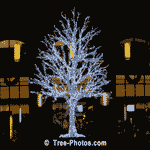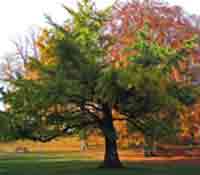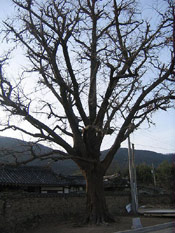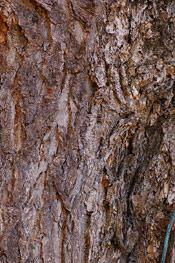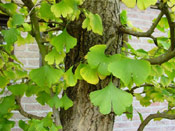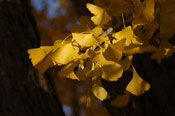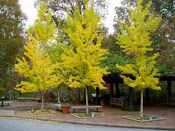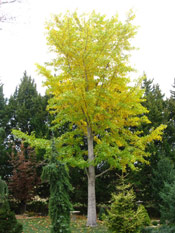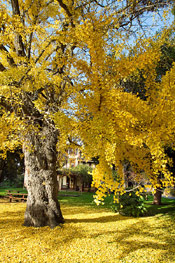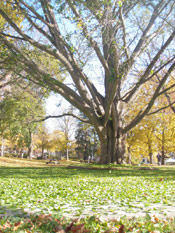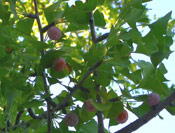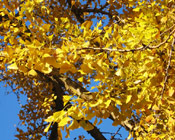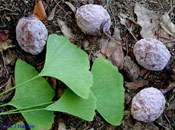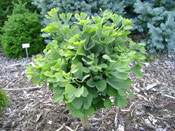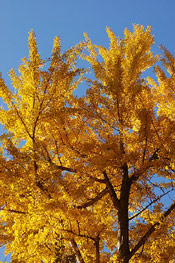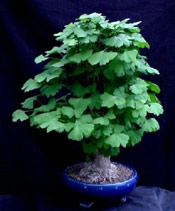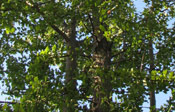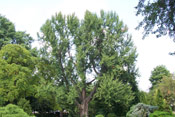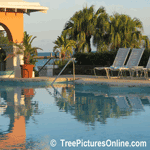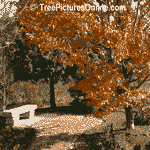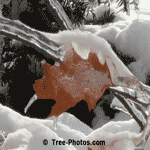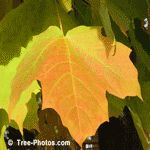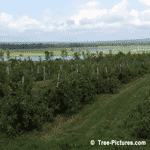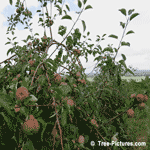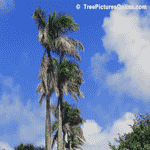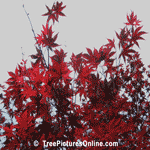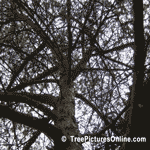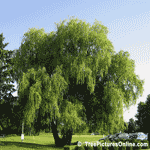Ginkgo Biloba Tree Pictures
Ginkgo Biloba tree pictures welcome. In the ginkgo Biloba gallery you will find lots of nice pictures of ginkgo biloba trees.
You will also find a lot of wonderful information on ginkgo biloba trees, including information about the ginkgo biloba tree species, planting information, and much more.
This is valuable and useful information that can help you to learn more about the ginkgo biloba tree.
Ginkgo Biloba Images
View each ginko tree picture in full size just click on the pictures. Enjoy these Ginkgo Biloba trees.
Ginkgo Tree Gallery
Ginkgo Tree: Facts on Ginkgo Biloba Trees
Here is some detailed information on ginkgo biloba trees.
Ginkgo also spelled gingko and known as the Maidenhair Tree, is a unique species of tree with no close living relatives. The tree is widely cultivated and introduced, since an early period in human history, and has various uses as a food and traditional medicine.
Ginkgoes are very large trees, normally reaching a height of 20 to 35 m (66 to 115 feet), with some specimens in China being over 50 m (164 feet). The tree has an angular crown and long, somewhat erratic branches, and is usually deep rooted and resistant to wind and snow damage. Young trees are often tall and slender, and sparsely branched; the crown becomes broader as the tree ages. During autumn, the leaves turn a bright yellow, then fall, sometimes within a short space of time (1 to 15 days). A combination of resistance to disease, insect-resistant wood and the ability to form aerial roots and sprouts makes ginkgos long-lived, with some specimens claimed to be more than 2,500 years old.
Ginkgo is a relatively shade-intolerant species that (at least in cultivation) grows best in environments that are well-watered and well-drained. The species shows a preference for disturbed sites; in the "semi-wild" stands at Tian Mu Shan, many specimens are found along stream banks, rocky slopes, and cliff edges. Accordingly, Ginkgo retains a prodigious capacity for vegetative growth. It is capable of sprouting from embedded buds near the base of the trunk (lignotubers, or basal chi chi) in response to disturbances, such as soil erosion.
Old individuals are also capable of producing aerial roots (chi chi) on the undersides of large branches in response to disturbances such as crown damage; these roots can lead to successful clonal reproduction upon contacting the soil. These strategies are evidently important in the persistence of Ginkgo; in a survey of the "semi-wild" stands remaining in Tian Mu Shan, 40% of the Ginkgo specimens surveyed were multi-stemmed, and few saplings were present.
Ginkgo branches grow in length by growth of shoots with regularly spaced leaves, as seen on most trees.
From the axils of these leaves, "spur shoots" (also known as short shoots) develop on second-year growth. Short shoots have very short internodes (so they may grow only one or two centimeters in several years) and their leaves are usually unlobed. They are short and knobby, and are arranged regularly on the branches except on first-year growth. Because of the short internodes, leaves appear to be clustered at the tips of short shoots, and reproductive structures are formed only on them (see pictures below - seeds and leaves are visible on short shoots). In Ginkgos, as in other plants that possess them, short shoots allow the formation of new leaves in the older parts of the crown. After a number of years, a short shoot may change into a long (ordinary) shoot, or vice versa.
The leaves are unique among seed plants, being fan-shaped with veins radiating out into the leaf blade, sometimes bifurcating (splitting) but never anastomosing to form a network.[4] Two veins enter the leaf blade at the base and fork repeatedly in two; this is known as dichotomous venation. The leaves are usually 5 to 10 cm (2 to 4 inches), but sometimes up to 15 cm (6 inches) long. The old popular name "Maidenhair tree" is because the leaves resemble some of the pinnae of the Maidenhair fern Adiantum capillus-veneris.
Leaves of long shoots are usually notched or lobed, but only from the outer surface, between the veins. They are borne both on the more rapidly-growing branch tips, where they are alternate and spaced out, and also on the short, stubby spur shoots, where they are clustered at the tips.
Ginkos are dioecious, with separate sexes, some trees being female and others being male. Male plants produce small pollen cones with sporophylls each bearing two microsporangia spirally arranged around a central axis.
Female plants do not produce cones.
Although Ginkgo biloba and other species of the genus were once widespread throughout the world, their range shrank until by two million years ago it was restricted to a small area of China. For centuries it was thought to be extinct in the wild, but is now known to grow in at least two small areas in Zhejiang province in Eastern China, in the Tian Mu Shan Reserve. However, recent studies indicate high genetic uniformity among ginkgo trees from these areas, arguing against a natural origin of these populations and suggesting that the ginkgo trees in these areas may have been planted and preserved by Chinese monks over a period of about 1,000 years.
The relationship of Ginkgo to other plant groups remains uncertain. It has been placed loosely in the divisions Spermatophyta and Pinophyta, but no consensus has been reached. Since Ginkgo seeds are not protected by an ovary wall, it can morphologically be considered a gymnosperm. The Ginkgo is a living fossil, with fossils recognisably related to modern Ginkgo from the Permian, dating back 270 million years. The most plausible ancestral group for the order Ginkgoales is the Pteridospermatophyta, also known as the "seed ferns," specifically the order Peltaspermales.
Ginkgo has long been cultivated in China; some planted trees at temples are believed to be over 1,500 years old. The first record of Europeans encountering it is in 1690 in Japanese temple gardens, where the tree was seen by the German botanist Engelbert Kaempfer. Because of its status in Buddhism and Confucianism, the Ginkgo is also widely planted in Korea and parts of Japan; in both areas, some naturalization has occurred, with Ginkgos seeding into natural forests.
The nut-like gametophytes inside the seeds are particularly esteemed in Asia, and are a traditional Chinese food.
Extracts of Ginkgo leaves contain flavonoid glycosides and terpenoids (ginkgolides, bilobalides) and have been used pharmaceutically. Ginkgo supplements are usually taken in the range of 40 to 200 mg per day. Recently, careful clinical trials have shown Ginkgo to be ineffective in treating dementia or preventing the onset of Alzheimer's Disease in normal people.
Impressive Tree Pictures
Collection of Impressive Tree Images
Trees: Recent Tree Photos, Pics & Images |
||
Palm Tree Pictures |
Beech Trees |
Palm Trees |
Oak Tree Gallery |
Christmas Trees |
Maple Trees |
Apple Tree Photo Gallery |
Apple Tree Images |
Palm Trees Gallery |
Japanese Maple Trees |
Pine Tree Gallery |
Willow Trees Category |
Tree Facts, Trivia
United States land is covered by over 30 per cent with trees and forests
Tree wallpaper images can make beautiful backgrounds on your computer`s desktop. See our tree wallpaper photographs link in the left tree categories.
Thank you for visiting our Tree Pictures at TreePicture Online.com, please come back soon for more great tree photos!
Pictures Sites
Fireplace Pictures -
Tree Pictures -
Gazebo Pictures -
Symbols & Their Meanings
Resume Samples -
Church Pictures -
Manufactured Home Pictures
Natural Log Siding -
Shadow Puppets -
Caribbean Islands
Play Touch Games -
Waterfall Pictures
Make Hot Pictures - Job Application Forms
![]()


